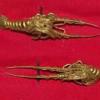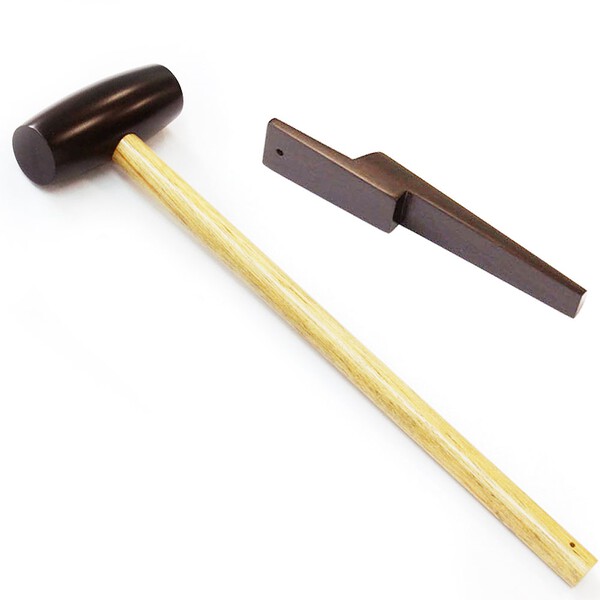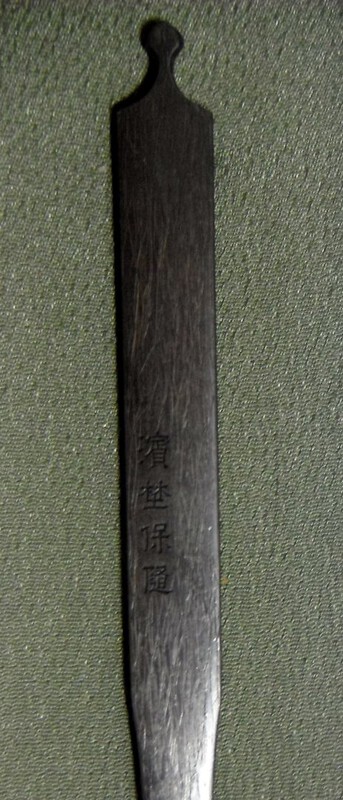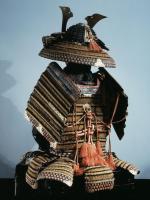-
Posts
435 -
Joined
-
Last visited
Content Type
Profiles
Forums
Events
Store
Downloads
Gallery
Everything posted by Lance
-
Looks similar to koshi-no-hiraita gunome-midare, usually associated with late koto,-early shinto Shinto Bizen Yokoyama Sukesada smiths. Regards, Lance
-

Utsuri or not Utsuri whats the question
Lance replied to Foletta's topic in General Nihonto Related Discussion
Dark area in between whitish area is likely just from thumb pressure and abrasive qualities of uchiko. Regards, Lance -
Your welcome, out of curiosity how long is the blade? Proportions wise it loos like a waizashi? Regards, Lance
-
Full mei is Noshu seki ju Kanefusa, I believe, https://www.aoijapan.net/wakizashi-noshu-seki-ju-kanefusa/ Regards, Lance
-
Hahaha, sorry, It was meant for the topic below, http://www.militaria.co.za/nmb/topic/31971-niji-mei-kanemoto-info/ This is what happens when multiple tabs are open looking for information. Others already provided my recommendations so all's well that ends well. Regards, Lance
-
Provided a pic of tool others mentioned above, place long side of wood against blade striking downward on front of habaki with wooden mallett. Solder will make this more difficult though. Might be worth trying to contact someone like Bob Benson in Hawaii to remedy it. I don't know what he'd charge you but you could probably get some input on the mei and sword itself from him at the same time. https://bushidojapaneseswords.com/index.html Also Ted Tenold who's a member here might be able to provide guidance as well and I believe he resides in California too. http://www.legacyswords.com/about.html Regards, Lance
-

Niji mei Kanemoto info
Lance replied to doomsdaymachine's topic in General Nihonto Related Discussion
Hi Reggie, San Francisco show would be a good idea, I believe it's one of the biggest sword shows in the US and there should be plenty of knowledgeable people there. Regards, Lance -

Niji mei Kanemoto info
Lance replied to doomsdaymachine's topic in General Nihonto Related Discussion
Hi Ken, I've submitted a couple swords that weren't in full polish that passed, and and seen many other swords in the US with NTHK papers, in person and on dealer sites in similar condition, If I had to guess I think most swords submitted to the NTHK shinsas held in the US, the bulk are probably not freshly polished. The point level might be less than fully restored but it's a cost effective way to get a judgement to help decide if a polish and shira saya is worth it. I don't think the standards lowered so much as they saw a need (or opportunity) to help US collectors (and US dealers) put more swords in front of knowledgeable eyes that might not ordinarily get sent to Japan. Regards, Lance -

Niji mei Kanemoto info
Lance replied to doomsdaymachine's topic in General Nihonto Related Discussion
Looks to be a well made sword, nice overall shape and bohi, I'd be happy finding it for such a price as a shin gunto example. I don't know where you live but it looks like it's in good enough condition to submit to one of the NTHK shinsa next time (if) they hold one in the US. Another thing to consider for your own enjoyment, "out of the woodwork swords" weren't always stored properly, so just a couple months of oil and light cleaning on a blade that hasn't seen any oil for decades can make a big difference. Apply oil, clean off (maybe use uchiko) and reapply oil when you take it out to study/look at, I've picked up swords at gun shows or flea markets and after after a couple weeks a blade that seemed somewhat "gray" brightened up and features more visible, even without uchiko. Regards, Lance -
I can't prove it, but I think they had to of used nugui or something similar to get such a contrast between the body of the sword and the white of the hamon, without doing all the extra work that would otherwise remove the scratches from previous steps. Regards, Lance
-
To me it looks like the ji (space between shinogi and hamon) wasn't darkened fully when it was polished, usually done with Nugui, an oil with (I believe) iron oxides in it. Wartime polishers, especially for Showa-to didn't spend the same amount of time with the finishing work, and/or weren't as skilled as traditionally trained togi so you sometimes end up with stuff that looks a little different polish wise. Regards, Lance
-
My understanding is you will never see the remnants of an old hamon on a re hardened sword, as before a new one is created the blade is heated and allowed to cool naturally. This removes the old hamon, both functionally and visibly. (I think this is also when the grain takes on the looser and glassy look,from multiple expansion contraction and change in carbon content) From the photos it just looks like the polisher didn't consistently follow the hamon, so the peaks aren't as white as the the rest when using hazuya finger stones, http://www.ksky.ne.jp./~sumie99/utsuri.html As an aside, maybe I just haven't seen enough swords or my logic is faulty, but I don't think there are as many re-tempered swords out there as people believe. It seems to me any swords that were really important and worth the effort are already very rare, (for example blades made by Koto masters damaged in a fire that were given to Echizen Yasatsugu and re tempered for the Shogun) Any munitions grade swords for ashigaru or even mid level blades were probably scrapped, and not worth digging through the rubble after a castle fire, and any that were reworked during a campaign due to battle wear saw attrition through just being used up. Regards, Lance
-

Type of Hamon? Different on both sides
Lance replied to Blazeaglory's topic in General Nihonto Related Discussion
If the tops of the hamon loop around, possibly koshi-no-hiraita gunome-midare? From Markus Sesko's Blog; Towards the end of the Muromachi period, the trend of a more complex gunome was still forwarded what resulted in the case of the Sukesada line in the so-called „kani no tsume“ (蟹の爪), the famous „crab claws“, where individual koshi-no-hiraita gunome-midare elements open towards the top and end in chôji-yakigashira which remind as the name suggests of crab claws (see picture 6). Picture 5: katana of Gorôzaemon Kiyomitsu (五郎左衛門清光) dated Tenbun 24 (1555) Picture 6: Schematic representation of a Sue-Bizen-hamon with kani-no-tsume. We can easily see how the isolated yô of the Ôei-Bizen smiths become again dividing elements on nioi basis (i.e. ashi) and give so a further complexity to the koshi-no-hiraita gunome-midare. https://markussesko.com/2013/03/13/a-brief-outline-of-the-changes-in-workmanship-of-the-later-bizen-tradition/ Regards, Lance -
I'm sure there was some over generalization (and exaggeration too) What Ive always found to be really interesting in these accounts is their impressions of us, we (westerners) must have been as weird to them as they to us, or maybe we were even stranger to them, at least we were in contact with China beforehand. Regards, Lance
-
Chris J (Vajo) mentioned Mino Shinto, maybe Kanefusa? kenbō-midare (兼房乱れ) – A kind of large-dimensioned chōji-midare that goes back to the smith Kanefusa (兼房). Kenbō is the Sino-Japanese reading of the characters “Kanefusa.” https://markussesko.com/2015/06/04/kantei-3-hamon-boshi-1-2/ (image and text from Markus Sesko's blog) Regards, Lance
-
Just noticed some of Aoi Arts' listings have YouTube videos included, pretty neat. link to channel below; https://www.youtube.com/channel/UCP7r6ZvJ-8zkPlc_Zuv0liA Regards, Lance
-
Thought I'd share some pics of a humorous kogai I mentioned very briefly in another post; by Yasuyuki , I believe Hamano school.of naughty horses (has NBTHK papers but didn't take a a shot of them) And to compliment others on their excellent photography skills, I hadn't done it in a while and forgot how tough it is. Regards, Lance
-
No problem Dave, I just wish whoever did it just had a new tsuka made instead of adding a new hole to the tang. Regards, Lance
-
Anything done was most likely at least 1 other person away from me before any alterations were made; I did some "almost" literal horse trading for a nice (but sort of naughty) horse kogai and other fittings with a dealer/collector I was friendly with somewhere within a year of that post. I doubt he altered anything as he wasn't a mix and match kind of person. If it was him, he would most likely have just had new tsuka made with the old fittings after sourcing tsuba and seppa without adding a new ana. Regards, Lance
-
Mei is Kanetsugu, It almost looks like the same sword I posted some years ago and someone messed with it a bit between the time I had it and it madecits way to you:addition of an extra mekugi ana and (unless its just a lighting difference) darkened the recessed portions of the horimono? When I had it, or the one I had by same smith everything that wasn't burnished had a frosted appearance. Also if I remember correctly the wrap had some fraying so someone may have swapped tsuka and added tsuba and seppa, that would explain the extra hole. Or its another sword by the same smith with almost exact horimono, See post below: http://www.militaria.co.za/nmb/topic/11756-help-with-gendaito-signature-request/ Regards, Lance
-
My impression was also that Japan never really made large metal plates for armor like Europeans and their fighting styles, tactics, and terrain etc. made lamellar or scale armor preferable. What I really always wondered was why they didn't use shields like Europeans did, then someone pointed out that their early armor had two giant shields on their shoulders. Different cultures coming up with different solutions to the same question? Regards, Lance
-
Thanks all, curiosity satisfied (although I'd love to see any other examples if there are any) Best regards Lance
-
Hi all, after seeing another post I remembered this odd tang shape and I was wondering if anybody had or seen any actual examples out in the wild? Gohei Gata Gohei refers to its resemblance to the pieces of paper which are attached to the sacred straw rope festoon used within Shinto shrines. This is only seen in the work of swordsmith Isenokami Kuniteru during the Edo period. Regards, Lance
-
They seem to be very uncommon but stainless/anti rust blades in gunto mounts with learther saya, do pop up occaisonally, and I believe (for whatever that's worth) they were purchased and carried in the field rather than post war mix and matches. No pics but some years back I had a couple in shin gunto mounts, one had better qualitiy furniture with two hangers, the other a single hanger. Both with leather coverings too. At least one was the anti rust type made by Kanenaga and appeared to have a real hamon, very thin light Nioguchi, different than an oil creaeed hamon but not quite the same as water hardened. Everything fit well and seemed to have proper wear in the leather to suggest they saw use. Regards, Lance













